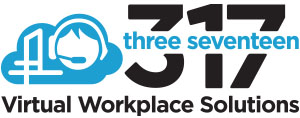If you’re like most, and even when many of us are working remotely, you need to attend or hold meetings. How many times have you left a meeting and realized you neglected to take notes, even though you need to refer to them in the future.
Some examples are:
- You’re representing your company or department and are responsible for reporting on the meeting’s key points.
- You are working on a client project, and there are pieces from the meeting you need to keep moving forward.
- You are taking a class to further yourself personally or professionally, and the notes are essential as there’s a quiz at the end.
Taking notes comes naturally for some, but it may be challenging to focus on the meeting and take notes simultaneously.
To follow are some tips to make it easier without getting frustrated.
To Do in Advance of the Meeting
If there’s an agenda distributed before the meeting, that’s great. This document will allow you to organize your notes by topic. And it works even better if it’s a digital document you can load onto your computer and enter questions/comments beneath each agenda item.
While the Meeting is in Progress
In most cases, it’s helpful to jot down a list of the meeting attendees. This way, you remember later who participated so that you may follow-up on a specific task or know who you need to brief later if they could not join you.
When taking notes, you do not need to take them verbatim. The more you practice, the better you will get at listing the highlights of each topic. Make sure you write to understand the overall conversation when you review these notes (i.e., make clear notes).
The notes should also include the tactical items you need to remember. For instance, your group is working on a project, and you are assigned a specific task. Make sure you’re clear on what is expected of you. If unclear, ask questions now versus mid-project.
Jot down who expects information from you and the deadlines.
Once the Meeting is Over
While the information is fresh in your brain, take the time, as soon as possible, to transcribe it into a more embellished format. If you wait too long, you’re bound to forget important details that could be detrimental, especially if you need to perform specific tasks.
Before you begin transcribing from your highlights and abbreviated notes, write/type the name of the meeting, date, and who was in attendance at the top of the page. Make sure the meeting name and date are also reflected in the name so you can easily search for it at a later date.
If you are responsible for a task or meeting a deadline, draft a blurb describing that task, to include deadlines, and send an email to the person (or entire group if applicable), to ensure you interpreted everything correctly.
Do you have the agenda but need a place to meet? Our meeting space is fully set up with the technology, comfort, and professional atmosphere to make you shine.
[maxbutton id=”2″ ]

